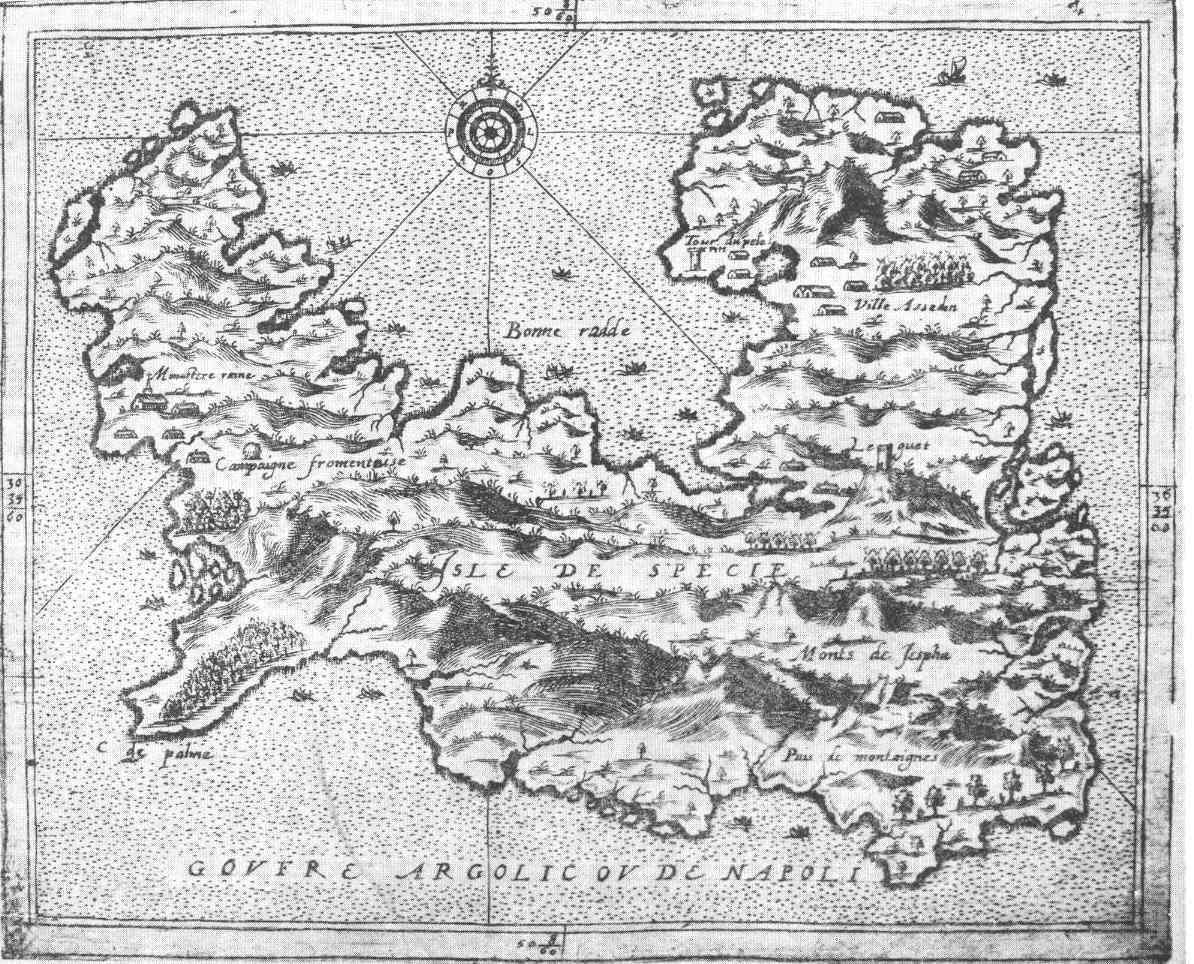
THE ISLAND OF SPETSAI
The island of Spetsai is situated at the entrance of the Argolikos bay, and its area is 22.24 square kilometers.
Pausanias, the Greek traveller and historian of the 2nd century A.D., whose work Hellados Periegesis (Travelling through Greece) is an invaluable source of information for archaeologists today, calls the island Pityousa (from the word pitys that means pine) because the place was full of pine trees. Later on, the name changed to Petsa and afterwards to Spetsai (plural) [Ed. note: Contemporary common usage is Spetses].
Although inhabited from ancient times, as it is testified from the findings of ancient tombs and coins, its population changed many times because the island, very often, was invaded by the pirates of the Aegean sea, forcing thus the islanders to flee to safer places in the mainland. When things became quiet again, other Greeks from the Peloponnesus or other islands would come to settle to Spetsai, till the next wave of pirates would force them to leave the island again.
From the times of the Crusades and till the beginning of the 18th century, when they became part of the Ottoman Empire, the Aegean Islands were under Venetian or Genoese rule. Spetsai were seized by the Turks in 1715, but very soon, as it happened with most of the islands, they were given considerable privileges which eventually amounted to autonomy; that meant that by paying taxes to the conqueror, the islanders were left alone to busy themselves with commerce and with building of ships. From the middle of the 18th century we have the emergence of a Greek merchant fleet. Spetsai, along with two other Greek islands, the nearly Hydra and another small island close to the Asiatic coast, Psara, were destined to develop the largest merchant fleet in the last quarter of the 18th century.
From this time, the Spetsiotes (the inhabitants of Spetsai) became very active as merchants with business interests in Europe, Africa, and Asia, accumulating considerable wealth, so that they were counted among the richest of Greeks. F.C.H.L. Pouqueville, the French philhellene, in his Voyage de la Grece, published in Paris in 1826-1827 (VI, 294-297) says that around 1813 the island of Spetsai had 60 ships, whose capacity was 19,500 tons, with a total crew of 2,700 seamen and 900 canons.
After the outbreak of the Greek War of Independence in 1821, the Greek merchant marine was converted into a revolutionary naval force. The three major maritime islands, Hydra, Spetsai, and Psara, played a decisive role in guarding the coasts against Turkish invasions and controlling the Aegean sea.
Among the figures distinguished for their courage and accomplishments" during the War, a unique personality is the heroine Laskarina Bouboulina (1771-1825), called by a contemporary Englishman who personally met her "A true descendant of the women of Sparta". Widow of a rich Spetsiot, she not only offered all her wealth and small fleet of ships for the Greek cause, but also she took part herself in the naval encounters with the Ottoman fleets. Her personality has become a legend and she is the subject of many tales and poems. Her relics are at the Museum of Spetsai and her statue adorns the island. Another important figure in the history of Spetsai is Hatziyannis-Mexis (1751-1844) whose house, built in 1795-1798 in arabian-venitian style, houses today the Museum of Spetsai.
After a short period of decline because of the War of Independence, the merchant marine was able to recover rapidly but the beginning of the end was close. By 1850, the introduction of steam navigation had a negative effect on the growth of the Greek merchant marine, until the end of the 19th century when the new era for the Greek maritime commerce begins.
Today the island of Spetsai is no longer an important maritime center. It has about 3,500 inhabitants and it is a popular summer resort favored not only by Greeks but by many tourists as well.
Sophie Papageorgiou, Gennadius Library,
Athens, 1984

Extremely rare map of Spetsai engraved around 1520 A.D. from the original drawing made by the Florentine geographer Christoforo Buondelmonti, who visited the island between the years 1410-1415. The original engraved map is in the Gennadius Library, Athens, Greece.
The map was reproduced, courtesy of the Gennadius, on the occasion of the International Symposium on Membrane Bioenergetics, Island of Spetsai, July 10-15, 1977; it is used here along with the above text by permission from Ms. Papageorgiou.